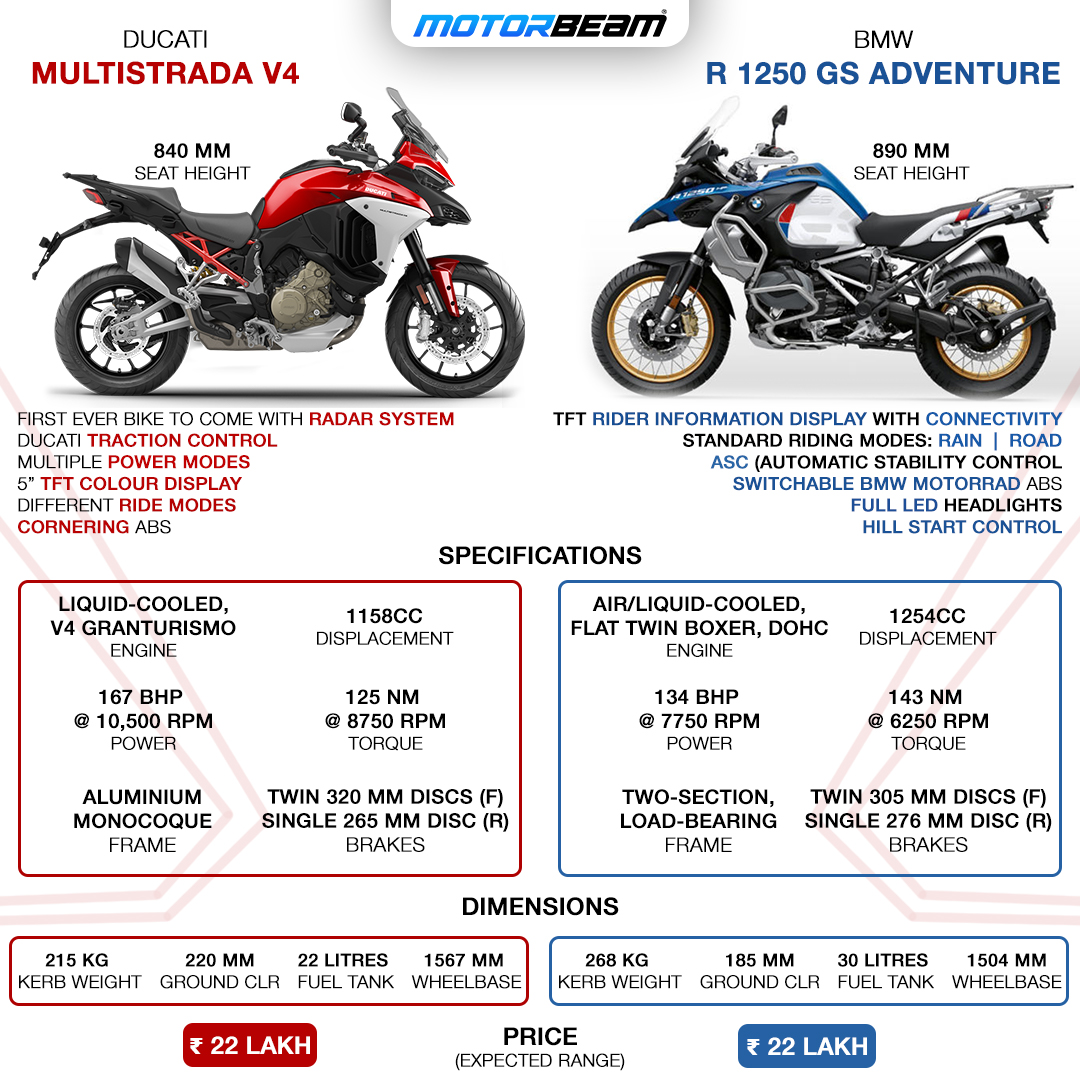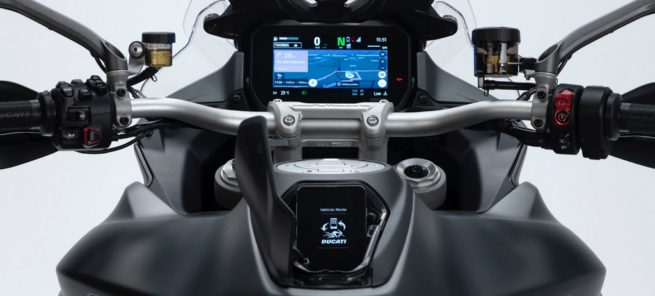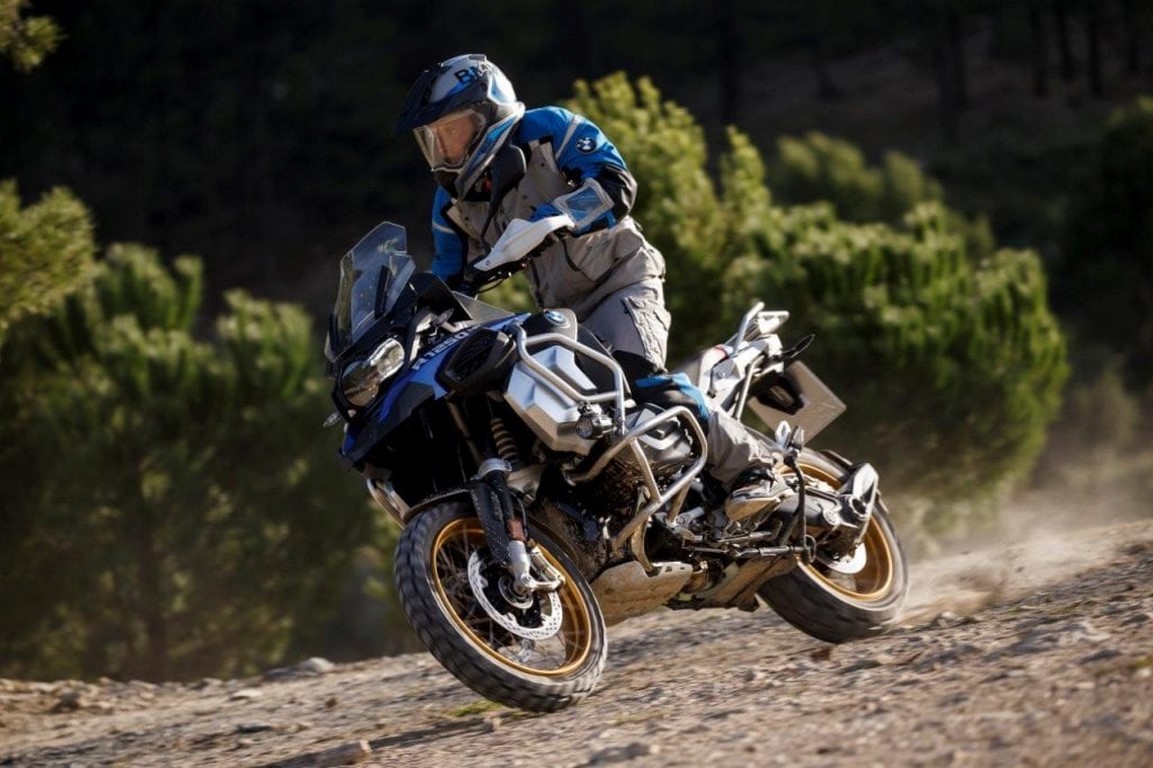Ducati Multistrada V4 vs BMW R 1250 GS Adventure – Spec Comparison
Love the Ducati Multistrada V4? Read below to see how it fares against the BMW R 1250 GS!
Love the Ducati Multistrada V4? Read below to see how it fares against the BMW R 1250 GS!
Home » Bike News » Ducati Multistrada V4 » Ducati Multistrada V4 vs BMW R 1250 GS Adventure – Spec Comparison

Ducati recently updated their top-of-the-line adventure offering, the Multistrada thoroughly, and it’s now called the Multistrada V4. As the suffix suggests, the Multistrada now uses a V4 motor instead of the previous twin and sees plenty of new bits, including a world’s first two-wheeler radar system too. Before this, the BMW R 1250 GS had also received an update for 2020 and saw some new bits as well, even though it has remained relatively unchanged overall. This is likely because the 1250 GS Adventure has been a favourite for most adventure junkies, meaning that the Multistrada V4 has a difficult task at hand if it plans on beating the Bavarian offering. While we hope to ride them soon, we bring to you a spec comparison for now as we pitch the new Ducati Multistrada V4 vs the BMW R 1250 GS Adventure.
Taking up the Multistrada V4 first, it is an all-new design, but it still stays true to the Multistrada design language. The front end sees a new all-LED headlamp setup with LED brows along with new air-intakes. The redesign at the front has primarily taken place to accommodate the new radar system between the headlamps, which might look odd when looked at from certain angles. The side profile has changed too as the V4 gets new fairings, and Ducati being Ducati has introduced aerodynamic scoops as well, to direct the air to the rider’s legs. The rear has changed too, and it looks less radical than before as it also accommodates the rear radar.
Taking BMW R 1250 GS Adventure’s case, the story is a little less exciting as it looks relatively unchanged. It gets a long beak upfront, a lot of metal parts at the side and spoke wheels, which make the GS look super rugged and more off-road friendly. It looks practical towards the rear too as it gets a bigger luggage carrier in comparison to the Italian offering. Both motorcycles have an overall tall stature, but with the GS having better road presence as it is broader. Between the two, I like the new Multistrada more than the GS, as the BMW’s design seems a little less radical and old now. However, enthusiasts who like purpose-built machines will like the R 1250 GS more. Lastly, looks are subjective, so do let us know which design attracts you more in the comments below!
Covering the common bits first, both bikes use TFT screens, LED lighting, riding modes, hill-start control, smartphone connectivity, 12V sockets, active rear suspension, adjustable windscreen and luggage racks. Other than all this, the Multistrada V4 gets plenty of other features including alloy wheels, cruise control, quickshifter and integrated indicators. The TFT size is smaller for the V4 (5-inches) as compared to the GS (6.5-inches) in the standard trim, but the V4 has better electronics as it gets Ducati Traction Control and 4 riding modes along with 4 load modes as compared to the BMW’s only two riding modes. Coming to the newest bit, the Ducati gets radar-based cruise control and a blind spot detection system while the GS misses out on it completely.
The GS has its own set of positives, though. It gets crash protection, spoke wheels, electronic immobiliser, adjustable levers, centre stand, and even adjustable foot lever, all as standard which the Multistrada misses out on. Additionally, you also get a detachable number plate, which will be helpful during off-road sessions. All in all, both motorcycles are feature-packed to the brim, but the V4 rounds up as a better and more technologically advanced package between the two. The GS has a long list of optional accessories, though, which could help it bridge the gap.
Ergonomically, as expected, both bikes focus on long touring stints and feature a comfortable upright seating posture. Both bikes are tall, thanks to their nature, but the BMW R 1250 GS has a seat height of 890 mm, which is 50 mm more than the Multistrada V4’s 840 mm. This makes the V4 more suitable for the masses in comparison to the BMW. However, the GS offers a lot of adjustable components, including the off-road type footrests, making it more adaptable to the rider. The GS also gets a 30-litre fuel tank, which is 8-litres more than the Multistrada.
There was a reason Ducati opted for the V4 setup, and it shows here. The Multistrada’s 1158cc V4 motor makes 167 BHP and 125 Nm of torque. Like its superbike siblings, the peak power is available at the top of the rev range, but Ducati claims that there’s plenty of power spread throughout as well. The R 1250 GS uses a calmer 1265cc twin-cylinder shaft-driven Boxer type motor which makes 136 BHP and 143 Nm of torque.
The BMW’s power isn’t really disappointing, but it definitely feels so when the Multistrada V4 comes into the picture. Even with its high torque figures, there’s no way the BMW can keep up with the 30 BHP deficit. Both bikes use 6-speed gearboxes, but to make matters worse for the Beemer, the V4 has a quickshifter as standard, which the GS gets only as an accessory. The V4 also has much better electronics and riding modes in comparison to the GS, making it an easy win for the former.
The Ducati Multistrada V4 is an adventure tourer offering unlike the R 1250 GS Adventure which is a little more biased towards off-roading. There is news that Ducati will launch an off-road friendly Enduro version of the V4, though, which hardcore off-road enthusiasts will appreciate. Coming back to the comparo, the V4 uses fully adjustable 50 mm USD forks upfront and a semi-active Marzocchi mono shock at the rear for the suspension duties. The BMW also gets active suspension at the rear, along with BMW’s in-factory made USD forks at the front.
For braking duties, the V4 has bigger front discs, while the GS has a bigger rear disc and both bikes get disengagable dual-channel ABS as standard. The biggest difference is the weight, though, as the V4 weighs about 50 kg less than the Beemer! This will definitely help the V4 ride better and even stop faster, thanks to the relatively lower momentum. The new MotoGP-derived aluminium monocoque chassis will further make the V4 a better handling machine as compared to the two-section load-bearing chassis on the GS, and the former also offers a higher ground clearance, making it the winner here!
Prices of both the Ducati Multistrada V4 and the 2020 BMW R 1250 GS aren’t out yet, but we expect both bikes to come around the Rs. 22 lakh (ex-showroom) mark. If both bikes happen to come at a similar price, the Ducati Multistrada V4 will definitely be our pick, thanks to its excellent feature-list and top-notch performance. Even if the BMW price the R 1250 GS around Rs. 2 lakh cheaper than the V4, the latter will still be a better motorcycle and will be our pick. However, if you’re a hardcore off-road enthusiast and looking for a more rugged bike, the R 1250 GS is a good option!


